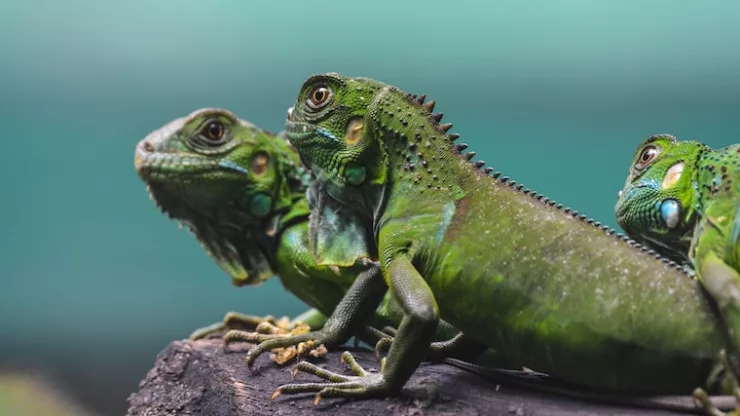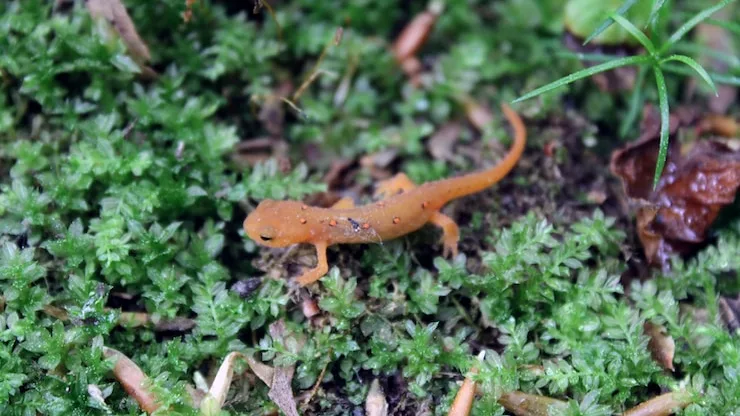Iguanas are fascinating creatures that have been around for millions of years. They are known for their distinctive appearance, with their rough, scaly skin and long, powerful tails.
Here are 22 fun and interesting facts about iguanas that you may not have known:
- Iguanas are native to Central and South America, as well as some Caribbean islands.
- There are several species of iguanas, including the green iguana, the blue iguana, and the rock iguana.
- Iguanas can grow up to six feet in length, including their tail.
- They are cold-blooded, which means they rely on external sources of heat to regulate their body temperature.
- Iguanas are herbivores, and their diet consists mainly of leaves, flowers, and fruit.
- They have sharp teeth that they use to tear apart their food.
- Iguanas have a third eye, located on the top of their head, which is used to detect changes in light and dark.
- Their skin is covered in tiny scales, which help protect them from predators and regulate their body temperature.
- Iguanas shed their skin periodically, just like snakes do.
- Green iguanas are the most commonly kept species as pets.
- Iguanas can live up to 20 years in the wild, and even longer in captivity.
- They are excellent climbers and can scale trees and walls with ease.
- Iguanas are territorial creatures and will defend their territory from other iguanas.
- Green iguanas are known for their bright green color, which helps them blend in with their surroundings.
- Male iguanas have larger heads and more prominent dewlaps (flaps of skin under their necks) than females.
- Iguanas are excellent swimmers and can hold their breath underwater for up to 30 minutes.
- They communicate with each other using a variety of visual and vocal cues.
- Iguanas are an important part of many ecosystems, as they help to disperse seeds and control insect populations.
- In some cultures, iguanas are considered a delicacy and are hunted for their meat.
- Iguanas are sometimes kept as pets in countries where they are not native, which can be harmful to both the iguanas and the local ecosystem.
- Iguanas are often depicted in art and mythology, and are sometimes associated with wisdom and longevity.
- The largest iguana ever recorded was a green iguana named “Iggy” who measured over seven feet long!
FAQ
How do you take care of a pet iguana?
Pet iguanas require a lot of care and attention.
They need a large enclosure with plenty of climbing space, UV lighting, and a heat source to regulate their temperature.
They also need a varied diet that includes leafy greens, vegetables, and fruit.
It’s important to handle them gently and avoid stressing them out, as this can lead to health problems.
Are iguanas dangerous?
Iguanas are generally not dangerous to humans, but they can be aggressive if they feel threatened or cornered.
Their sharp teeth and powerful tail can cause injury if they bite or lash out.
It’s important to respect their space and avoid provoking them.
Do iguanas make good pets?
Iguanas can make good pets for experienced reptile owners who are willing to put in the time and effort to care for them properly.
They are not recommended for novice owners or those who are not prepared for the challenges of keeping a large, active reptile.
How can you tell if an iguana is male or female?
Male iguanas have larger heads and more prominent dewlaps (flaps of skin under their necks) than females. In some species, males also have larger spines on their backs.
How long do iguanas live?
Iguanas can live up to 20 years in the wild, and even longer in captivity with proper care.
Can you keep iguanas as pets in all states?
Laws regarding pet iguanas vary by state and country. It’s important to research the laws in your area before getting an iguana as a pet.

I am a fun fact enthusiast and creator of Facts On Tap.
I love to share my knowledge and curiosity with readers and inspire them to learn something new every day.
When I’m not writing, I enjoy traveling, reading, and playing trivia games with my friends.





